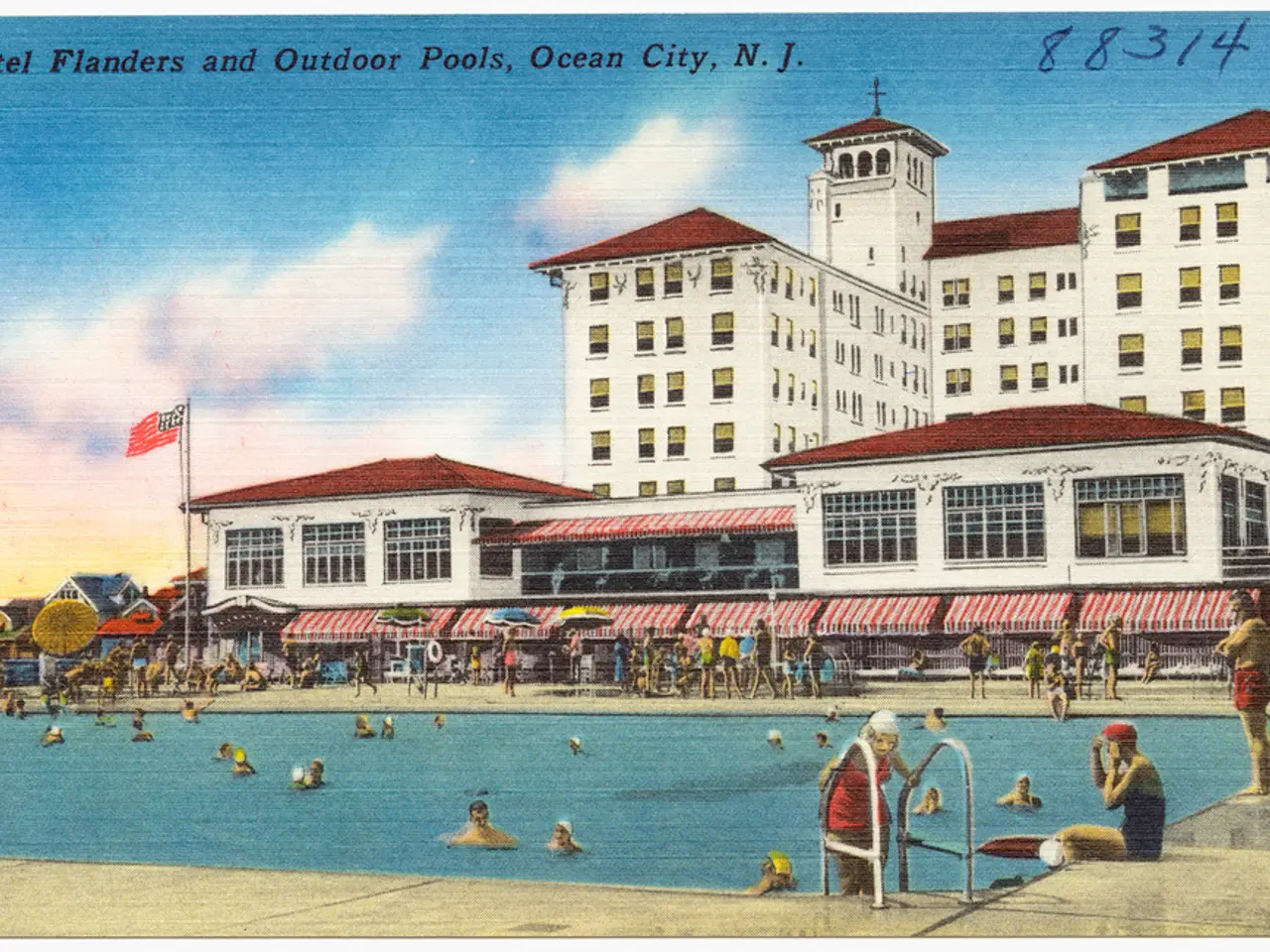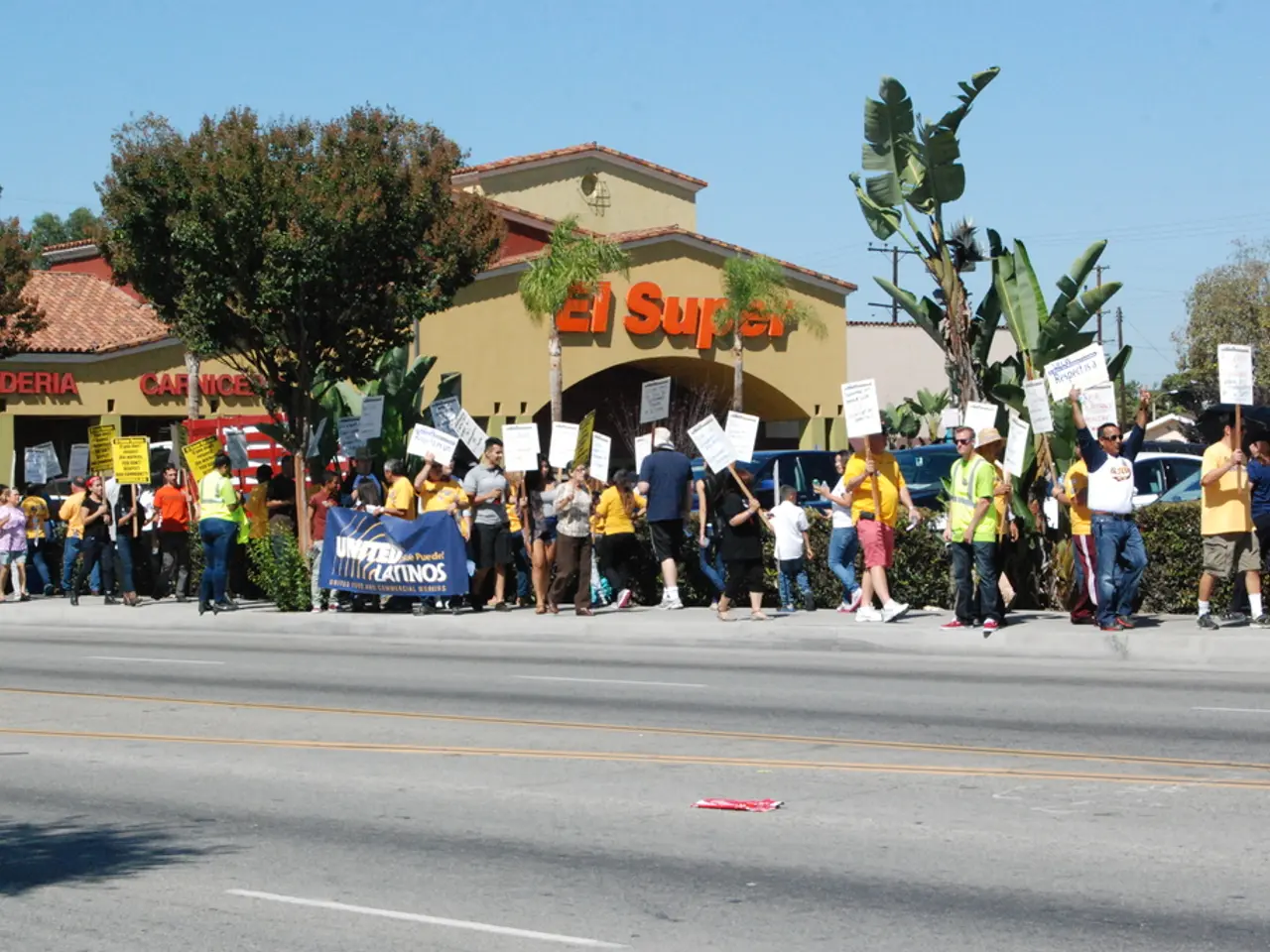Ranked Movies: These cinematic creations are given a rating based on various factors and viewer feedback.
**Key Films Define Global Cinema Movements: A Comprehensive Overview**
In the rich tapestry of world cinema, various movements have emerged, each with its unique style and thematic concerns. Here's an exploration of some of the most significant film movements and their landmark works.
- **Cinema of Attractions (Early Cinema, circa 1890s-1900s)** This movement emphasised spectacle and direct audience engagement, rather than narrative storytelling. Notable early works include *The Arrival of a Train at La Ciotat* (1897) by the Lumiere brothers and *A Trip to the Moon* (1902) by Georges Méliès.
- **Italian Futurism (1910s-1920s)** Focused on speed, technology, and modernity, with experimental visuals. Although many Futurist films were lost, *Thaïs* (1917) by Anton Giulio Bragaglia is a key example.
- **German Expressionism (1910s-1930s)** Characterised by distorted sets and chiaroscuro lighting to express psychological states, key films include *The Cabinet of Dr. Caligari* (1920, Robert Wiene), *Nosferatu* (1922, F.W. Murnau), and *Metropolis* (1927, Fritz Lang).
- **Impressionist Cinema (France, 1910s-1920s)** Emphasising visual impression and emotional experience, important works include *La Roue* (1923, Abel Gance), *Napoléon* (1927, Abel Gance), and films by Louis Delluc and Germaine Dulac.
- **Surreal Cinema (1920s-1930s and later)** Focusing on dream imagery and the unconscious, major films are *Un Chien Andalou* (1929, Dalí/Buñuel) and *L’Âge d’Or* (1930, Buñuel).
- **Soviet Montage (1920s)** Highlighting editing (montage) to create meaning, key films: *Battleship Potemkin* (1925, Sergei Eisenstein), *Man with a Movie Camera* (1929, Dziga Vertov), *Strike* (1925, Eisenstein).
- **Poetic Realism (France, 1930s)** Featuring moody, atmospheric stories about working-class characters, key films: *Port of Shadows* (1938, Marcel Carné), *The Children of Paradise* (1945, Carné), *Pepe le Moko* (1937).
- **Film Noir (1940s-1950s, primarily US but influential globally)** Dark crime dramas with moral ambiguity and stark lighting, notable films: *The Lady Gambles* (1949), *Double Indemnity* (1944), *The Maltese Falcon* (1941).
- **Italian Neorealism (1940s-1950s)** Focusing on post-war everyday life with non-professional actors and location shooting, key films: *Bicycle Thieves* (1948, Vittorio De Sica), *Rome, Open City* (1945, Roberto Rossellini).
- **Parallel Cinema (India, 1950s-1980s)** A socially conscious, realistic Indian cinema movement, key films: *Pather Panchali* (1955, Satyajit Ray), *Nayak* (1966, Satyajit Ray).
- **Polish Film School (1950s-1960s)** Exploring war and national identity with sophisticated narratives, key films: *Ashes and Diamonds* (1958, Andrzej Wajda), *Knife in the Water* (1962, Roman Polanski).
- **French New Wave (late 1950s-1960s)** Innovating with jump cuts, location shooting, and youthful themes, key films: *The 400 Blows* (1959, François Truffaut), *Breathless* (1960, Jean-Luc Godard).
- **Japanese New Wave (1950s-1970s)** Challenging traditional norms, often political and stylistic experimentation, key films: *Cruel Story of Youth* (1960, Nagisa Oshima), *Pigs and Battleships* (1961, Shohei Imamura).
- **Direct Cinema & Cinéma Vérité (1960s)** Documentary styles emphasising observation and minimal intervention, canonical works include *Primary* (1960) and *Chronicle of a Summer* (1961).
- **Cinema Novo (Brazil, 1960s-1970s)** Politically charged films focusing on social inequality, important films: *Black God, White Devil* (1964, Glauber Rocha), *Vidas Secas* (1963).
- **New British Wave (late 1950s-1960s)** Realistic, kitchen-sink dramas about working-class life, key films: *Saturday Night and Sunday Morning* (1960, Karel Reisz), *A Taste of Honey* (1961).
- **Czechoslovak New Wave (1960s)** Known for absurd humour and political critique, key films: *Closely Watched Trains* (1966, Jiří Menzel), *The Firemen's Ball* (1967, Miloš Forman).
- **Cuban Revolutionary Film (1960s onward)** Focused on revolutionary themes and social change, key works: *Memories of Underdevelopment* (1968, Tomás Gutiérrez Alea).
This list is by no means exhaustive, but it covers the key films that define each movement's style and thematic concerns across global cinema history. For instance, German Expressionism’s *The Cabinet of Dr. Caligari* is a foundational horror and psychological film, whereas Italian Neorealism’s *Bicycle Thieves* is vital for its humanist depiction of post-war hardship. French New Wave’s *Breathless* revolutionised film grammar, and Soviet Montage’s *Battleship Potemkin* remains seminal for editing theory.
Entertainment corporations often distribute movies and television shows as part of a global media landscape, promoting cultural exchange and popularizing various film movements. For example, the iconic horror film 'The Cabinet of Dr. Caligari' (1920) from the German Expressionism movement was popularized worldwide by its distribution, while the socially conscious Italian Neorealist film 'Bicycle Thieves' (1948) became a symbol of post-war hardship that was widely recognized globally. These examples illustrate the power of movies and TV in bridging geographical boundaries and sharing diverse narratives through entertainment.








